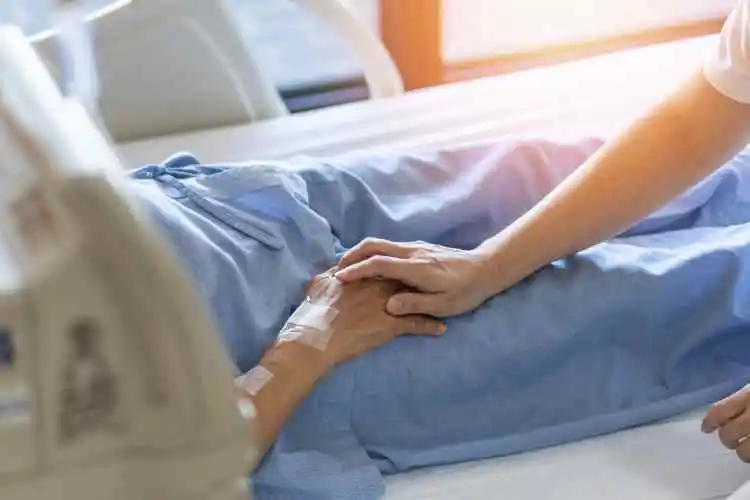Patients enduring a life-threatening injury or illness like a stroke qualify for palliative care. These services focus on enhancing the patient’s overall quality of life. While hospice can serve in the same capacity as palliative care, palliative care doesn’t fall in the same category as hospice care.
Palliative care can be taken advantage of at any stage of the condition from the point of diagnosis and on. When the practitioner delivers the diagnosis, they will discuss the adverse effects and what to expect as this progress. Palliative care will be provided as a complement to a medical care plan.
As the care plan progresses, pain and symptom control will be crucial to motivate the individual toward independence, maximize functionality, and enhance overall quality of life. It’s essential to begin treatment early in the diagnosis phase to reduce the chance of crisis care in later stages.
These teams typically consist of a medical practitioner, a nurse, a social worker, and a chaplain, all of whom are specially trained in palliative care. The group aligns their care with the general provider to meet the patient’s treatment goals.
Learn how you can manage your stroke with palliative care at https://www.stroke.org/en/life-after-stroke/recovery/managing-your-stroke/palliative-care.
How Does Stroke Affect the Brain and Body
“Ischaemic” is typically the term used for a typical stroke. There’s a disruption of the blood flow to the brain from a clogged artery, creating a blockage. When an artery bleeds in the brain, resulting in pressure building, this is a “hemorrhagic” stroke. In either event, the surrounding tissues will become severely damaged.
With an ischaemic episode, it’s noted that the brain begins to age “at roughly 3.6 years per hour with deterioration of the cognitive functionality occurring twice as fast.” A fatality or irreparable brain and physical impairment can be the result when immediate attention is not sought with strokes.
Rehab can endure for years to try to improve quality of life with differing levels of success. The goal with rehab is to retrain the brain and physical impairments impacted by the stroke, but to understand the brain damage is unrecoverable.
It is possible to rewire the healthy zones to initiate new connections, allowing the patient to recover some functionality.
Tips On How Palliative Care Can Work Toward Stroke Recovery
With palliative care in stroke patients, multiple medical specialists come together to provide a holistic treatment approach to an individual with a life-threatening illness or injury. The primary aim is to improve the person’s overall quality of life with a care plan personalized for the stroke victim.
Treatment plans are not one-size-fits-all; they are created with each person’s specific needs in mind. However, the aim for each patient is the same across the board.
Palliative specialists aim to provide maximum support to achieve the best results for anyone suffering from stroke. These processes vary with the potential for many ups and downs and unpredictable outcomes. The benefit is that the care allows outpatient services to occur in any environment.
Unfortunately for family and close friends, they’re often unprepared for the complexity that comes with post-stroke care; the palliative team will help the patient settle in and progress in their rehab, providing loved ones with treatment training.
The caregivers will become familiar with adverse effects, symptoms, and potential complications. When there’s an urgent need, the palliative specialists will act rapidly with proper protocol for outpatient stroke recovery.
It’s critical to pay attention to open wounds that can develop from being immobile. These can lead to an infection and, ultimately, a fever. A palliative team will medicate these until they are fully healed.
What Is Palliative Care’s Focus
Stroke survivors are burdened with numerous long-term adverse effects that inhibit their quality of life. These can include paralysis and extremity weakness; some could experience challenges in swallowing from muscle weakness within the throat, and others endure mental or memory and communication impacts.
Strokes are life-altering for the victim and affect loved ones, considering the emotional distress, unfamiliar care plans, and possible loss of income from the patient. It can be frightening for everyone involved, but priority is placed on recovery and helping the individual enjoy the best quality of life.
This is the focus of a palliative care team, along with helping to alleviate the stroke symptoms for optimum physical, emotional, and spiritual well-being. Click here for details on palliative care for stroke victims.
Final Thought
A stroke is an event that instantly alters life circumstances for everyone involved. Not only is the victim often irrevocably impaired, but those surrounding them are greatly affected. These loved ones and close friends face unfamiliar caregiving duties, emotional distress, and the possibility of the patient’s income loss.
Fortunately, with a team of palliative care specialists, the stroke patient is set up for outpatient care with a treatment plan established and rehab initiated. The family will be trained in what to expect with adverse effects, symptoms, and complications and how to respond to these.
The care team is available to respond to emergencies, so the at-home caregivers are never without support. The goal for everyone is optimum recovery and achieving a better quality of life for the patient.

